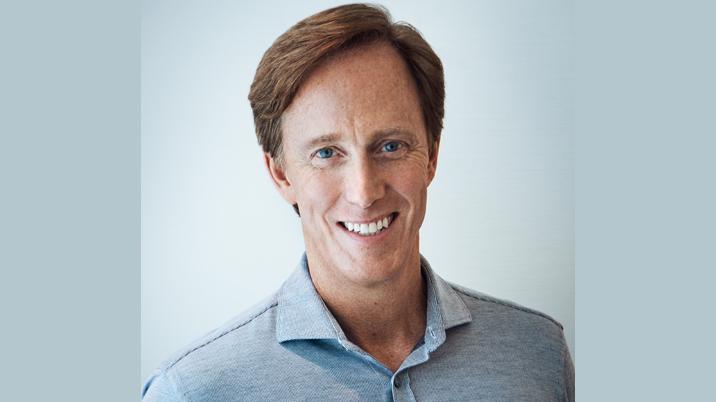
In other words, the big trends haven’t changed much. But that doesn’t mean any lack of news on a week-to-week basis, as the specifics continue to play out in sometimes-unexpected fashion.
Condé: Change Afoot on All Fronts
Since Condé Nast encapsulates all of these trends, big-time, I’m opting to focus mainly on that company this time around, rather than attempt to summarise innumerable developments across the industry. Also, I think there’s reason to believe that the scenario is considerably more optimistic (or less dire) than one would gather from the preponderance of ominously-toned coverage of Condé.
Media watchers on both sides of the pond are more engrossed than ever in how things will evolve at Condé, now that Roger Lynch – its brand-new, first-ever global CEO – is taking on the challenge of integrating the US and Condé Nast International (CNI) arms into a single, multiplatform entity.
If Condé Nast Entertainment (CNE) were to make a movie about its own parent company, it couldn’t hope to cast anyone who more perfectly personifies the changing of the guard and the inherent drama of attempting to transform the magazine publisher that over the decades came to epitomise glitz, excess and elitism, along with the highest editorial standards.
If some think that undertaking might require brilliance on the clichéd “rocket science” level, Lynch would seem well armed (so to speak): He was a physicist who “spent years designing infrared missile systems before pivoting to business school at Dartmouth,” according to Digiday. And as everyone knows by now, Lynch has an impressive record of building and restructuring tech and entertainment businesses, and zero experience in publishing. While the latter would have triggered furrowed brows and tsk, tsk-ing in the old magazine world, it’s now viewed as not just refreshing, but a source of excitement and hope, according to various reports on the prevailing mood among Condé’s denizens.
Lynch was most recently CEO of Pandora for about 18 months, “essentially leading it toward a $3.5-billion sale to SiriusXM,” noted Digiday. “Before that he was CEO for five years of Sling TV… and was an EVP at Dish Network for another five years, where he focused on the international business and tech development.”
Importantly, he’s also at home in the UK and Europe, where he lived for a decade while “serving as chairman / CEO of Video Networks International Ltd, a London-based IPTV provider, and before that, as president and CEO of Amsterdam-based Chello Broadband, where he pioneered the rollout of broadband services across ten European countries,” reported the New York Post.
Lynch has been described as “methodical and level-headed, equally adept at digging into the weeds and using big-picture thinking to see years into the future,” and as “kind of a cleaner,” who “comes in, reorganises, figures out where to focus and execute”.
Asked by the NY Post to describe the model for the future, Steven Newhouse, co-president and board member of Condé parent Advance Publications, replied: “I think the reason we hired an entrepreneurial executive who has experience transforming companies globally is we expect him to figure that out.”
Indeed. Of course, privately held Condé, which was until recent times closely guided by the legendary SI Newhouse, has taken lumps for hanging on to the failing advertising-dependent model far too long. But Lynch inherits a company that’s already taken some steps toward diversification. Condé has actually made a number of aggressive moves into new channels, businesses and revenue models in the past few years under Bob Sauerberg (CEO from 2016 through this April, following six years as president under CEO Chuck Townsend).
CNE, launched in 2012, is both a revenue bright spot and a foundation for the more expansive video and TV businesses that are expected to be one major thrust for Lynch. As of 2018, “the plan was to triple the size of revenue from video over the next few years,” wrote WWD. “Sauerberg also oversaw the launch of Spire, an audience insight platform that sells data to advertisers and is said to be doing well, along with the recent purchase of CitizenNet, a data science company, which took a bite out of revenue for fiscal 2018. Last August, Sauerberg laid out his strategy for returning Condé [which had reportedly lost some $250 million since 2016, but came close to breaking even last year] to profitability by 2020 – a target apparently being met – and adding $600 million in new revenue.”
In his parting message to staff, Sauerberg also declared that “incredible progress” had been made in the six months following the Advance board’s late 2018 decision to integrate the worldwide operations under an as-yet-to-be-chosen global CEO. “Our revenue team has stabilised our business and our edit, video, tech and data teams have delivered on growth initiatives,” he wrote, per WWD. “We’ve managed costs, shifted our resources to our growth areas more nimbly and positioned the business for an exciting global future…”
(As Sauerberg was departing, Bon Appétit launched a new “perfect recipe-making” show for its YouTube and over-the-top streaming channels Roku, Apple TV, Amazon Fire TV and Android TV, underscoring the continuing video / TV push.)
“If you look at the entirety of Condé Nast, the global financial situation, I would characterise it as healthy,” Steven Newhouse insisted to the NY Post. “Healthy means room for improvement, but not a crisis.” He added that the revenue contributions from the US and the rest of the world are roughly balanced at present.
Condé also displayed innovation with the January launch of Vogue Business, a B2B extension offering fashion and “luxury” professionals their own email newsletter, site and social media channels – free for now, but intended to generate revenue from business products and services, and possibly paid subs. The basic concept of tapping the business side of consumer brands is already being emulated by others.
On the paid content front, Condé grabbed headlines last November with its announced plan to implement some type of paywall for each of its brands by year’s end, following successful soft paywall trials with The New Yorker, Vanity Fair and Wired. This very public, all-in commitment will of course be closely watched by other consumer publishers, since all are to a growing degree faced with the existential question of whether enough consumers will prove willing to pay consistently for digital magazine content. Charging for quality editorial from prestige Condé brands could prove the acid test.
In another interesting turn not directly related to Condé (but presumably meant in part to help finance Condé’s transformation), Advance reportedly invested $1.75 billion to acquire Turnitin, an anti-plagiarism software company. Turnitin is said to have been profitable for years, although its estimated revenues are relatively modest (under $200 million). While not exactly inspiring, it seems a safe bet for continued growth. In the immortal words of HL Mencken (now, sadly, proven correct by our 2016 election – although our popular vote elected Clinton!): “No one ever went broke underestimating the intelligence of the American public.” And what with US celebrities now being prosecuted for buying college admissions for their offspring, this investment looks positively prescient.
Condé has actually made a number of aggressive moves into new channels, businesses and revenue models in the past few years.
Apple Redux and Data Dangers
In parting, I want to hit briefly on a few developments that I fear could prove counterproductive to the progress being made by magazine media in diversifying revenue sources and shifting emphasis to building relationships with consumers, rather than wooing advertisers at any cost.
- Apple News+: It’s not hard to understand why the big magazine publishers that invested in Texture (including Condé Nast) would welcome the opportunity to recoup the investment by selling it to an eager Silicon Valley giant, and getting (according to some reports) preferential terms compared to other participants in the resulting Apple News+ service. And Apple’s reach to more than a billion people, through iPhones, is of course extremely tempting. According to The New York Times, within 48 hours of the Apple News+ launch, more than 200,000 people signed up to for free trials of the service, offering access to issues from more than 300 magazines for $9.99 per month. That’s reportedly as many subscribers as Texture (originally Next Issue Media) was able to attract over the course of its seven-year history.
- Potential for data abuse: Yes, data – particularly first-party customer data – is invaluable, and the oil that enables the targeting and content / messaging customisation that can in turn drive sales of paid content, events and products, as well as advertising. In fact, publishers were a bit tardy in recognising and fully leveraging their unusually deep knowledge of their readers.
But I can’t help thinking that it’s folly to brush aside the warning of New York Times CEO Mark Thompson: “We tend to be quite leery about the idea of almost habituating people to find our journalism somewhere else.”
I also don’t get how it makes sense for a publisher like Condé to implement paywalls with the goal of building ongoing revenue from consumers who truly value its brands’ content, while at the same time undermining that by offering access to multiple titles, through Apple News+, that’s cheaper than buying it directly through Condé. (Online subscriptions to The New Yorker, Vanity Fair and Wired together cost more than $10 a month, and The New Yorker by itself costs $7.50, as NYT pointed out not long ago.) Not to mention the potential cannibalisation of print subscriptions and newsstand sales.
In addition, after what should be a still-painful memory of how Apple wooed and then abandoned publishers during the iPad apps debacle, is it really wise to entrust magazine brands’ future with this company a second time? Guess we’ll see.
But as consumers are waking up to the privacy invasions and financial and other dangers stemming from data misuse, even long-term brand loyalty can go up in smoke if tracking, algorithms and AI get out of hand. Publishers should take care not to blow the trust that is a real differentiator and competitive edge, particularly as Facebook and other entities face heightened scrutiny and regulation.
Even long-term brand loyalty can go up in smoke if tracking, algorithms and AI get out of hand.










